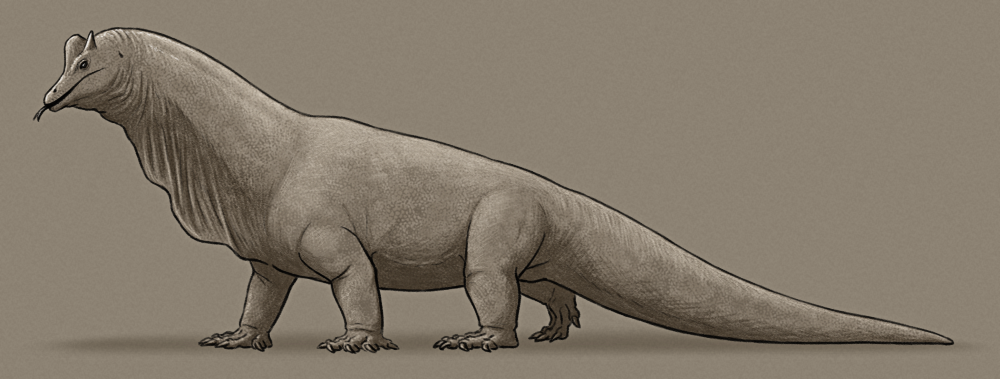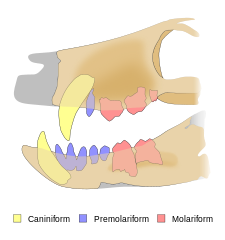First appearing in the Middle Jurassic, about 167 million years ago, the sebecosuchians were a group of terrestrial crocodilians that are known from South America, Europe, North Africa, Madagascar, and India.
They were very closely related to (or possibly descended from) the diverse and often very weird notosuchian crocs. But while notosuchians were generally small and had specialized mammal-like heterodont teeth, the sebecosuchians were much larger (around 3-4m long / 9′10″-13′) and had blade-like serrated teeth convergently similar to those of some theropod dinosaurs. Their teeth were so incredibily dinosaur-like, in fact, that Cenozoic specimens have occasionally been mistaken for evidence of late-surviving non-avian dinos.
With deep narrow snouts, powerful jaws, and upright limbs, these crocs were clearly fast active predators, and must have been directly competing with similarly-sized theropods during the Mesozoic. They were obviously doing well enough to survive alongside their distant dinosaur relatives for many millions of years, right up until the end-Cretaceous extinction – but the surprising part is how the sebecosuchians seemed to survive the extinction just fine across most of their range, while the non-avian theropods obviously didn’t. Something about these particular large terrestrial predators allowed them to pull through relatively unscathed, although whether it was to do with their metabolisms or something else is still unknown.
By the end of the Eocene the sebecosuchians outside South America seem to have died off (coinciding with the rise of placental carnivorans), but the isolated South American forms continued their success for most of the rest of the Cenozoic.
One of the best-known species is Sebecus icaeorhinus from western South America, ranging from Colombia to Patagonia, with various fossils dating from the Early Paleocene all the way through to the mid-Miocene (~66-11 mya). About 3m long (9′10″), it was named after the ancient Egyptian crocodile god Sobek and was one the first sebecosuchians to be discovered, lending its name to the entire group.
The last definite fossils of Sebecus and its relatives come from the mid-Miocene, but they may possibly have survived up until at least the Miocene-Pliocene boundary about 5 million years ago. It’s not clear exactly why these big land crocs finally went extinct, but it was likely due to a combination of factors such as the influx of placental predators from North and Central America, along with climate changes from the continuing rise of the Andes mountains and the formation of the Isthmus of Panama.






